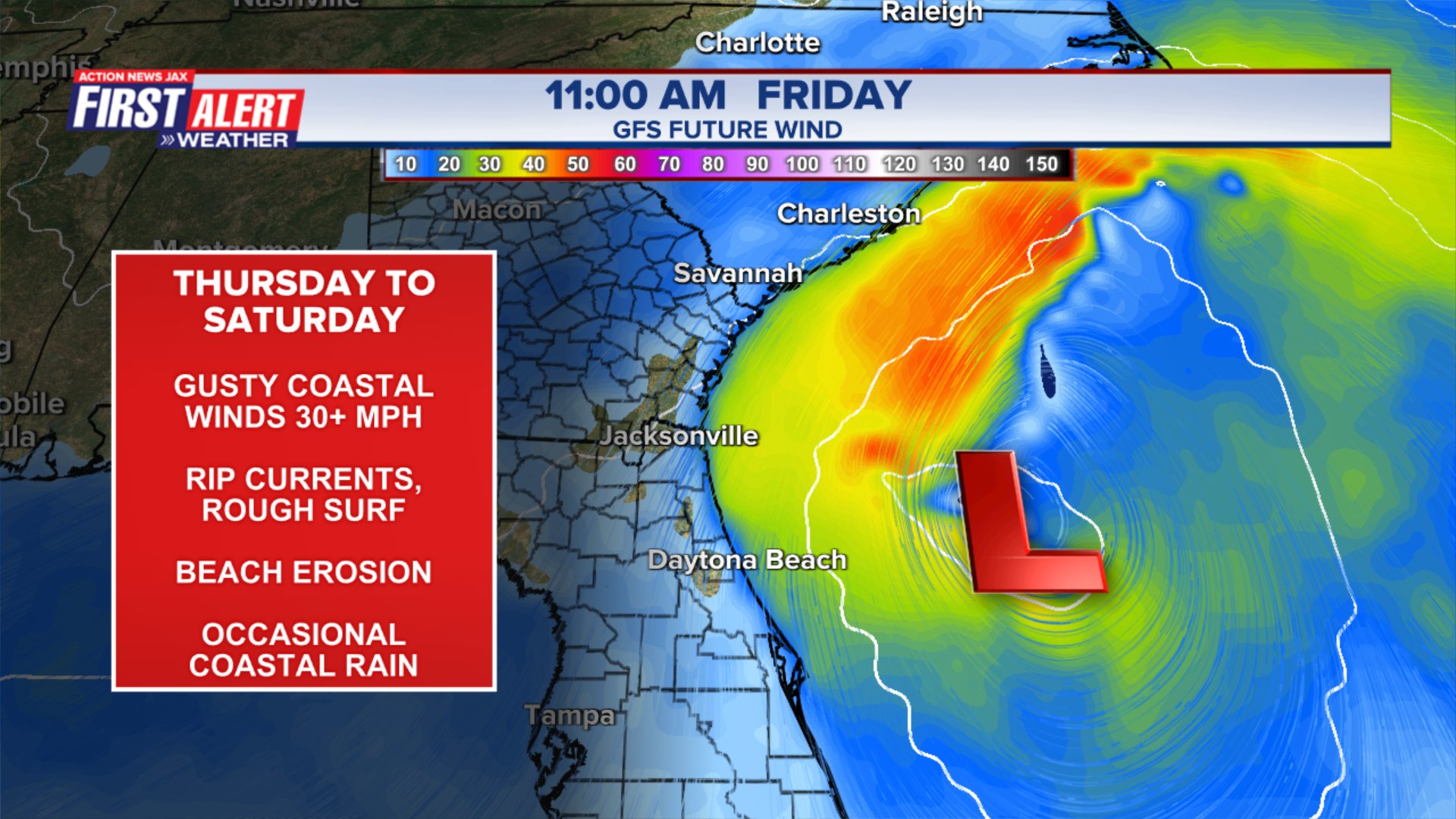Jacksonville, Fl. — The “Buresh Bottom Line”: Always be prepared!.....First Alert Hurricane Preparation Guide... City of Jacksonville Preparedness Guide... Georgia Hurricane Guide.
STAY INFORMED: Get the * FREE * First Alert Weather app
FREE NEWS UPDATES, ALERTS: Action News Jax app for Apple | For Android
WATCH “Preparing for the Storm”
WATCH “The Ins & Outs of Hurricane Season”
READ the First Alert Hurricane Center “Survival Guide”
LISTEN & WATCH “Surviving the Storm” - WOKV Radio & Action News Jax
***** ALWAYS CHECK & RE-CHECK THE LATEST FORECAST & UPDATES! *****
REMEMBER WHEN A TROPICAL STORM OR HURRICANE IS APPROACHING: Taping windows is *not* recommended & will not keep glass from breaking. Instead close curtains & blinds.
Realize the forecast cone (”cone of uncertainty”) is the average forecast error over a given time - out to 5 days - & *does not* indicate the width of the storm &/or where damage that might occur.
*** LOCAL (Jacksonville/NE Fl./SE Ga.) IMPACTS FROM THE TROPICS: None through Wednesday... but carefully monitoring developing low pressure late in the week near & east of the coast of Florida. As for right now - gusty winds, heavy rain, rough seas & surf along with at least a very high rip current risk will impact coastal areas Thu. & especially Friday/Saturday. Depending on the strength & exact location of the low, impacts could be more significant & farther inland.
The Atlantic Basin Overview:
** T.D. #15 developed into “Nigel” over the Central Atlantic....
** A trailing strong tropical wave at a lower latitude closer to Africa has the potential for eventual development...
** Low pressure to develop near Florida late week...

(1) Tropical depression #15 formed over the Central Atlantic Friday & was upgraded to “Nigel” Sat. evening & became a hurricane - the 6th of the Atlantic season - early Mon. Nigel but will remain well east of the U.S. coast, even east of Bermuda. Nigel has a large eye - some 50-60 miles across - & has been battling some nearby dry air & shear but could strengthen some more before moving over cooler water late in the week. Steering currents remain locked in with the Bermuda high displaced well to the northeast followed by a strong upper level trough that will move across the N. Atlantic late in the week helping to turn Nigel sharply to the northeast while accelerating then becoming post-tropical by at least the weekend.
Nigel is the 14th named storm of the Atlantic season.... the 10th named storm on avg. develops on Sept. 22nd & 14 named storms is the avg. of a whole season (June 1 - Nov. 30).
(2) A strong tropical wave will come off the coast of Africa early this week & may slowly develop while moving west.
(5) We’ll also need to watch for possible tropical or subtropical development near Florida late this week. A surface trough of low pressure will develop near & just offshore of the east coast of Florida by Thu./Fri. Forecast models are unanimous in the development of the trough & have recently come into pretty decent agreement on low pressure developing very near & a little east of Florida. For the moment at least, none of the models are particularly strong with this low with varying exact locations... but all with some semblance of movement toward the north along or a little offshore of the Southeast U.S. coast. The GFS model is generally a little more east &, therefore, stronger while the European model is more west & a little weaker (more land interaction).
This is a situation to watch as “in-close” tropical development does fit the pattern with a rather strong high to the north. If the low can stay far enough offshore long enough then a tropical or subtropical system could form.
Regardless of development... nor’easter conditions will begin to unfold Wed. & especially Thu./Fri. lasting into Saturday for coastal NE Fl. & SE Ga. with gusty onshore (out of the east/northeast) flow/winds along with bands of heavy rain, rough seas & surf & dangerous rip currents.
Rainfall forecasts for the next 7 days from the GFS & European model respectively:





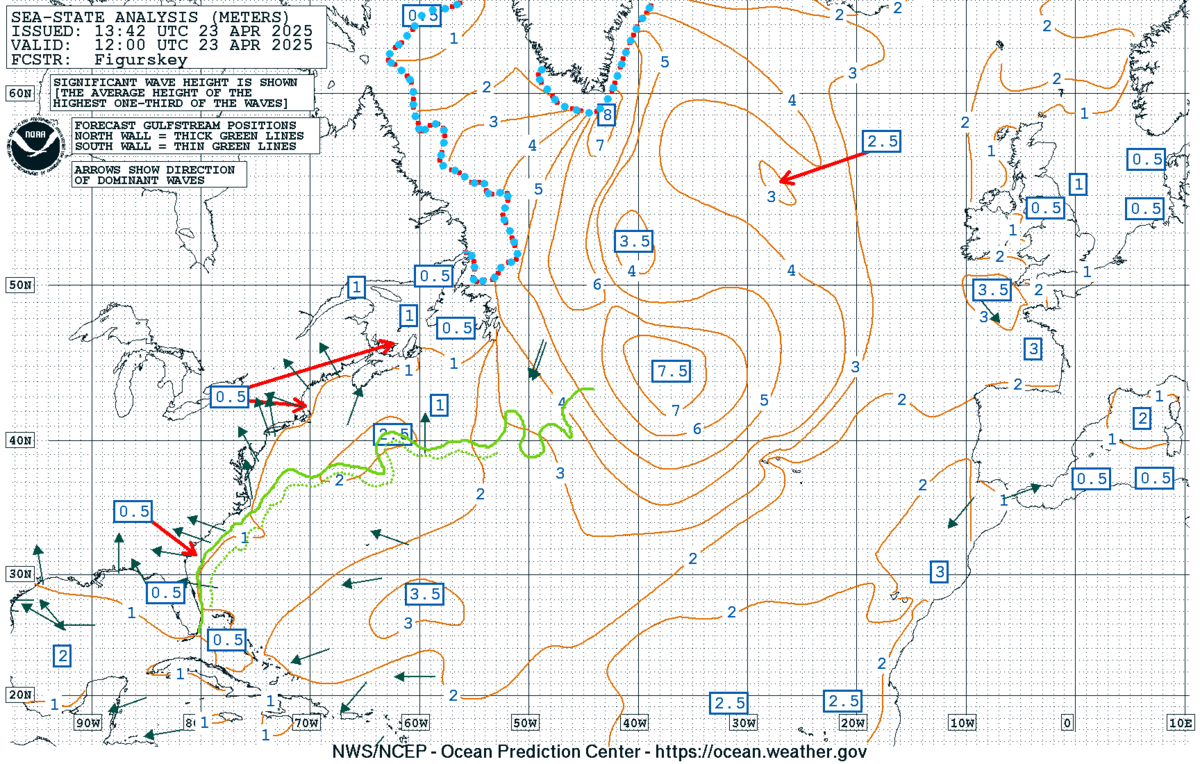


Check out the upper oceanic heat content (UOHC) [tropical cyclone heat potential/TCHP] across the SW Atlantic, Gulf & Caribbean. The warmth is very deep. But keep in mind warm ocean temps. alone doesn’t necessarily equate to a “big” hurricane season (need other ingredients & factors to be favorable too) but it’s obvious there is a lot of very warm water at great depths over the Caribbean & Gulf of Mexico stretching eastward all the way into the Central Atlantic:
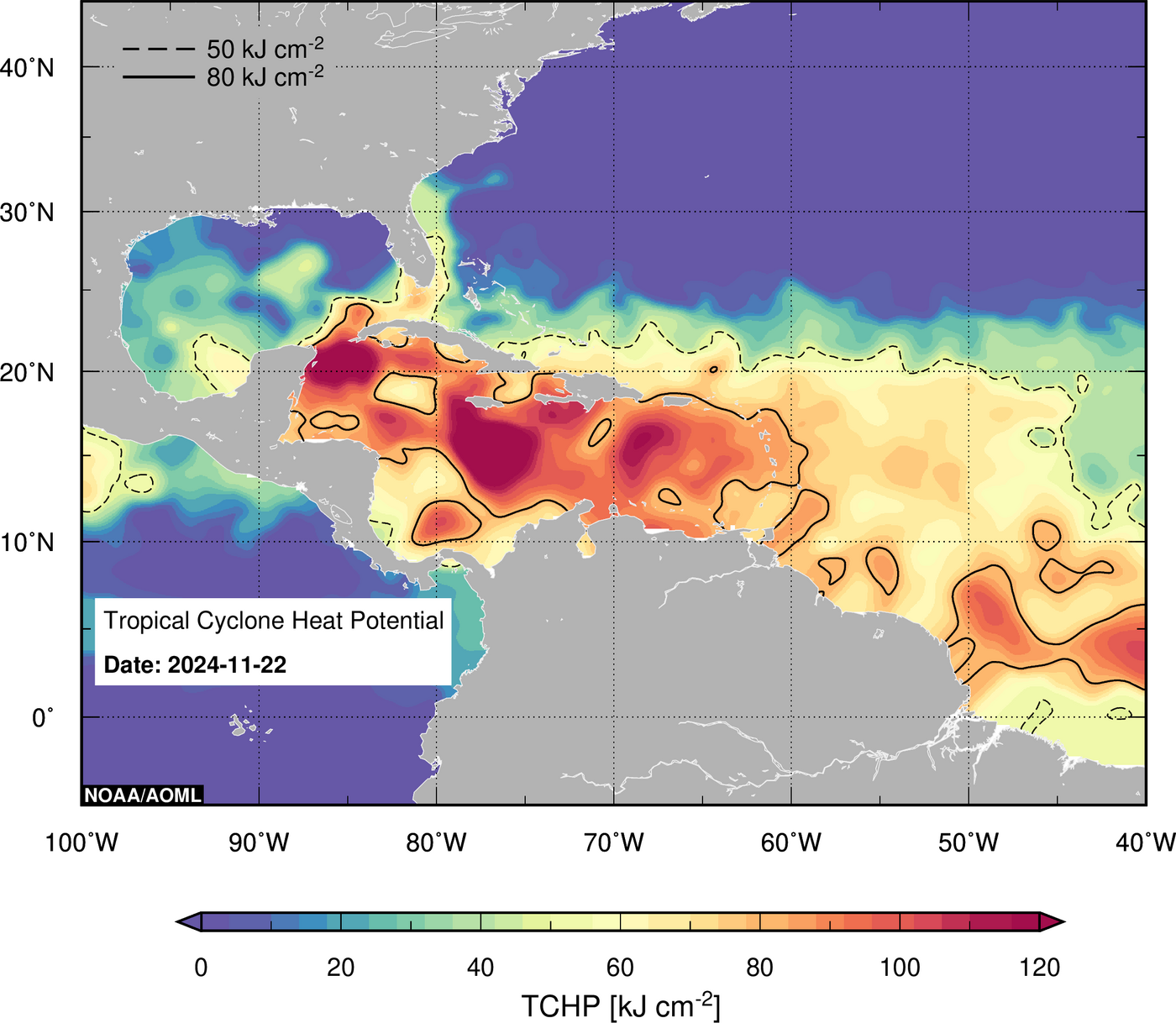
Velocity potential anomalies - the map below shows “roughly” where the air is rising (green lines) vs. air that is generally descending (brow lines). These “pulses” - strong related to the MJO [Madden-Julian Oscillation] - often correlate with increased tropical cyclone activity. The current pulse over the Pacific should translate eastward & could be located over the Atlantic Basin by late this month into the first 1-2 weeks of Oct. If true, we could expect an uptick in Atlantic tropical development.
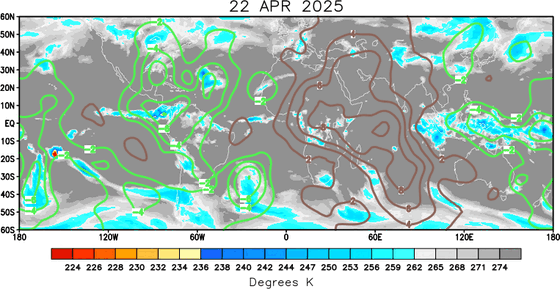



Water vapor loop (dark blue/yellow is dry mid & upper level air):


July tropical cyclone origins:
Averages below based on climatology for the Atlantic Basin for August:

Wind shear:



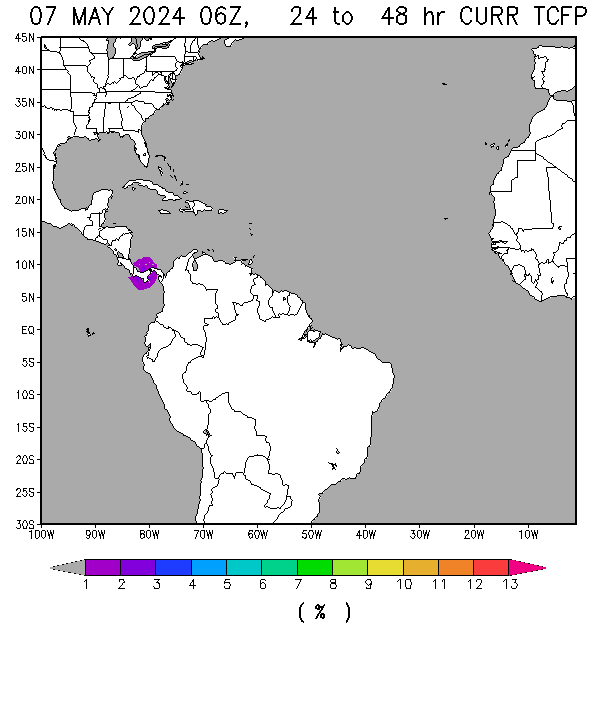
Saharan dust spreads west each year from Africa by the prevailing winds (from east to west over the Atlantic). Dry air - yellow/orange/red/pink. Widespread dust is indicative of dry air that can impede the development of tropical cyclones. However, sometimes “wanna’ be” waves will just wait until they get to the other side of - or away from - the plume then try to develop if other conditions are favorable. In my personal opinion, way too much is made about the presence of Saharan dust & how it relates to tropical cyclones. In any case, the peak of Saharan dust typically is in June & July.

2023 names..... “Ophelia” is the next name on the Atlantic list (names are picked at random by the World Meteorological Organization... repeat every 6 years). Historic storms are retired [Florence & Michael in ’18... Dorian in ’19 & Laura, Eta & Iota in ‘20, Ida in ‘21 & Fiona & Ian in ‘22]). In fact, this year’s list of names is rather infamous with “Katrina”, “Rita” & “Wilma” retired from the ‘05 list & “Harvey”, “Irma”,“Maria” & “Nate” from the ‘17 list. The WMO decided - beginning in 2021 - that the Greek alphabet will be no longer used & instead there will be a supplemental list of names if the first list is exhausted (has only happened three times - 2005, 2020 & 2021). The naming of tropical cyclones began on a consistent basis in 1953. More on the history of naming tropical cyclones * here *.





East Atlantic:





Mid & upper level wind shear (enemy of tropical cyclones) analysis (CIMMS). The red lines indicate strong shear:
Water vapor imagery (dark blue indicates dry air):

Deep oceanic heat content over the Gulf, Caribbean & deep tropical Atlantic. The brighter colors are expanding dramatically as we near the peak of the hurricane season.:
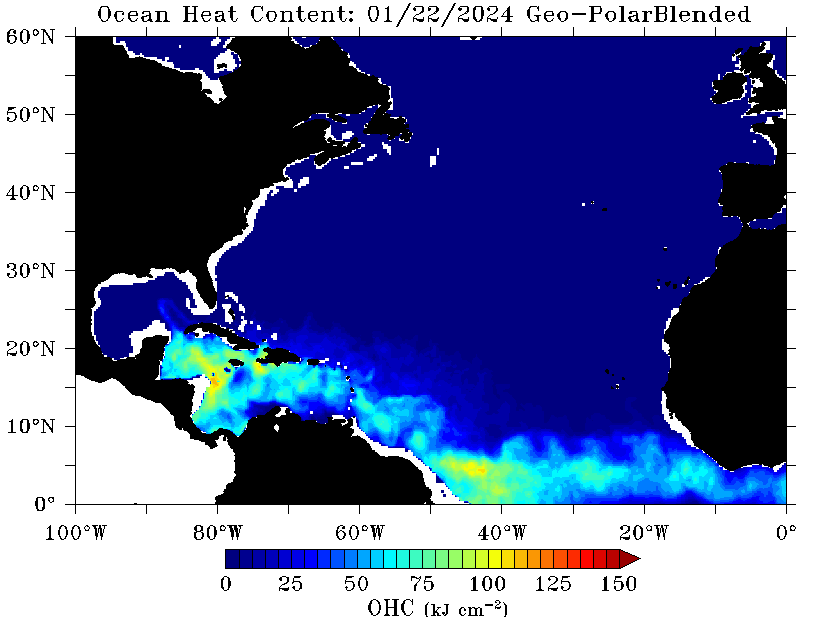
Sea surface temp. anomalies:
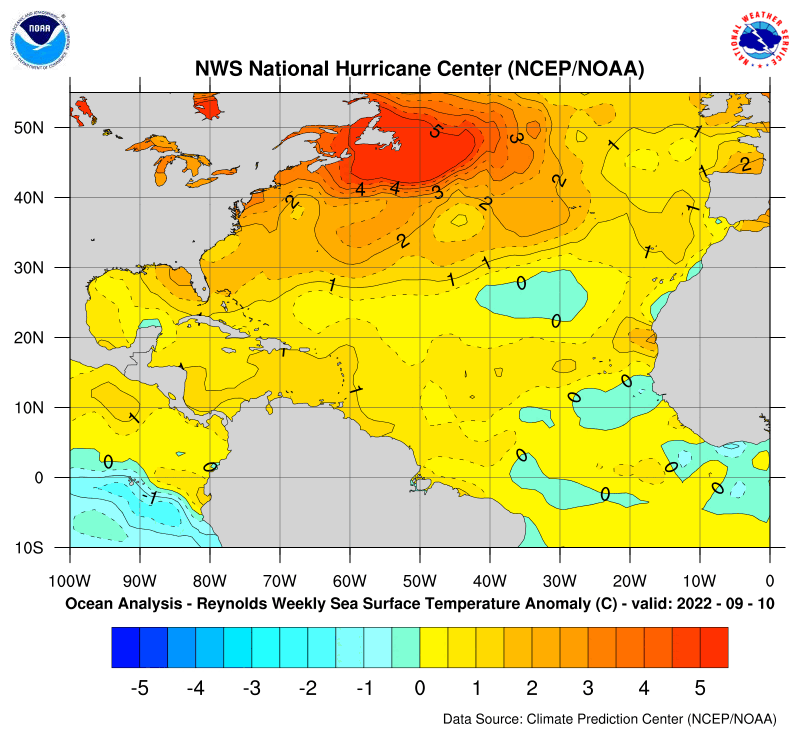

SE U.S. surface map:

Surface analysis centered on the tropical Atlantic:

Surface analysis of the Gulf:

Caribbean:

Atlantic Basin wave period forecast for 24, 48, 72 & 96 hours respectively:



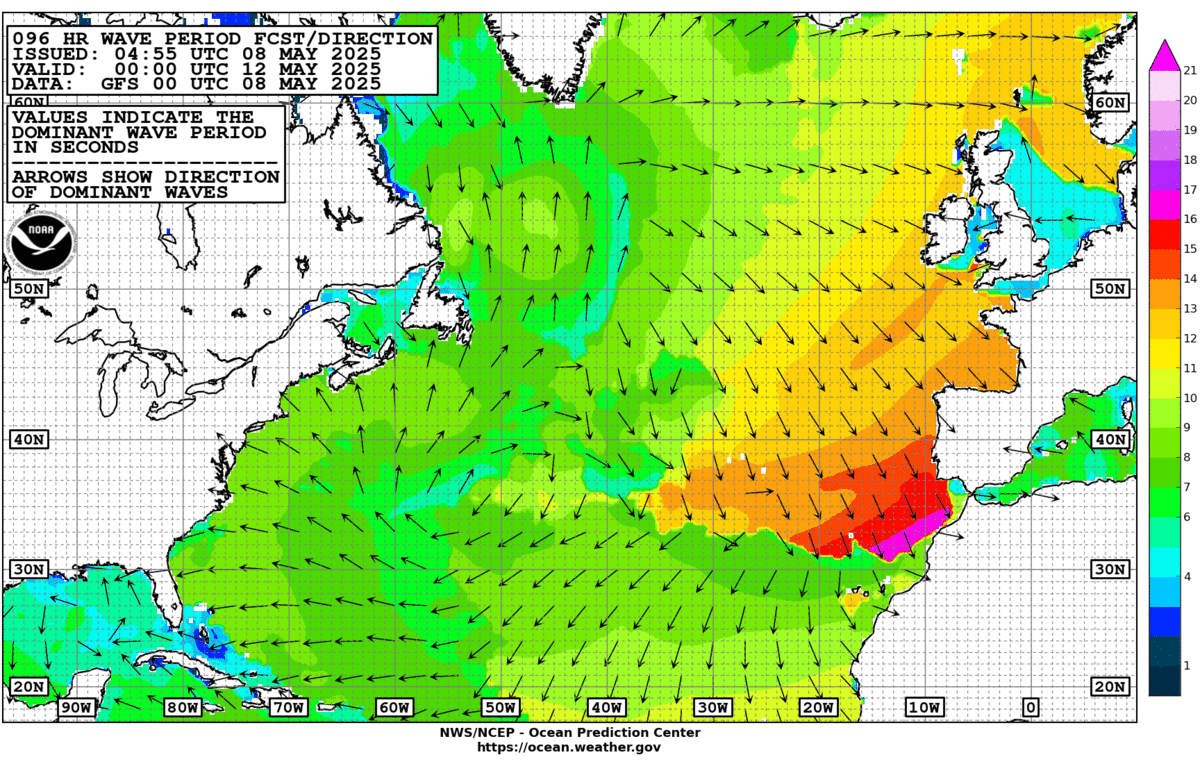
East/Central Pacific:
Newly formed tropical cyclone over the E. Pacific should briefly strengthen then weaken as the storm gains latitude & move over cooler water & encounters increasing shear. No threat to any land areas:






West Pacific:

Global tropical activity:

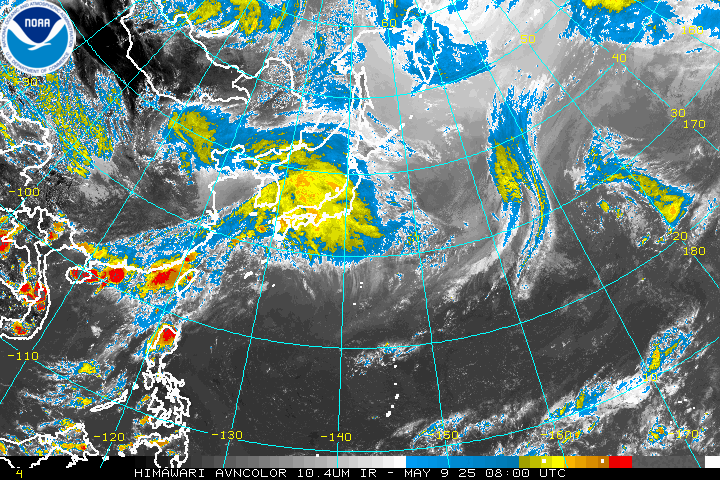
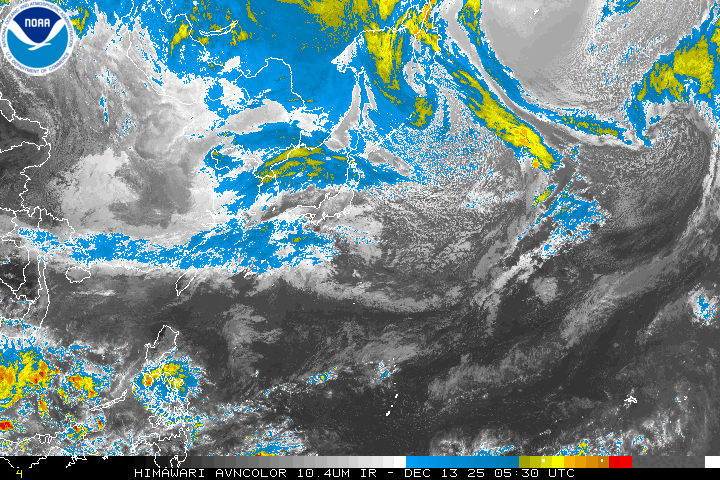
Cox Media Group


